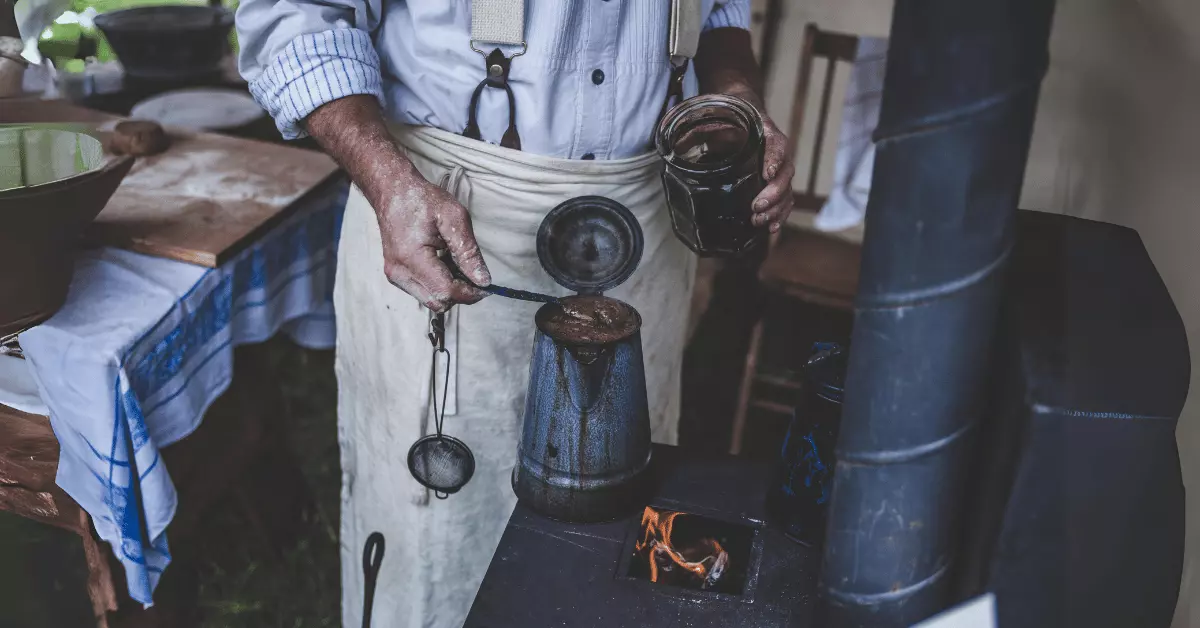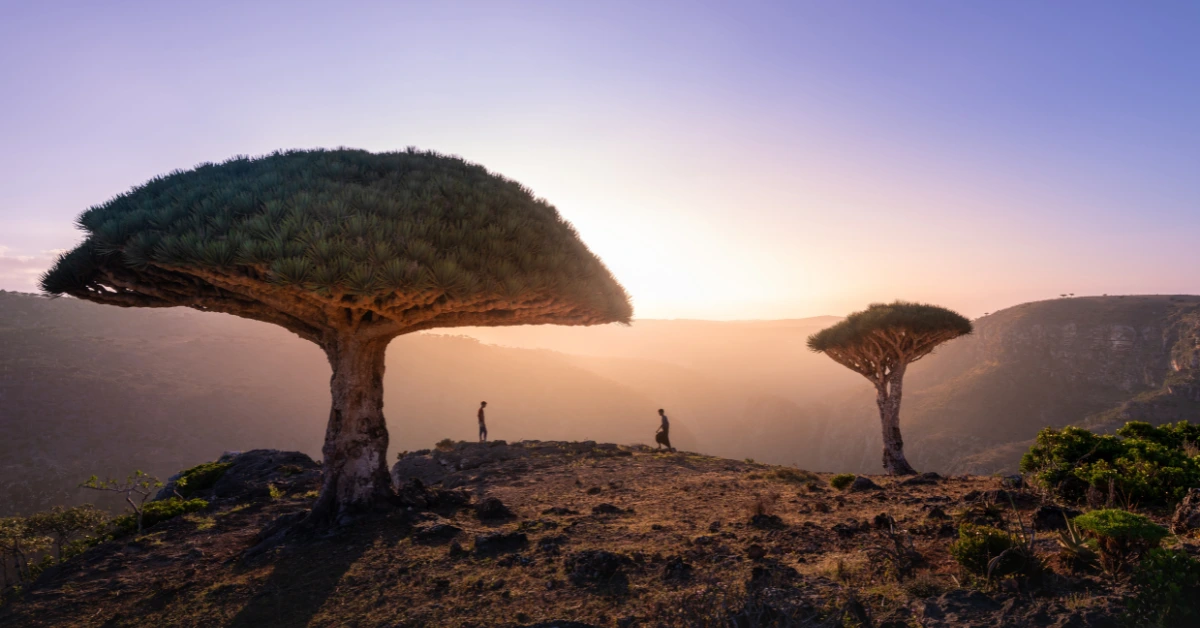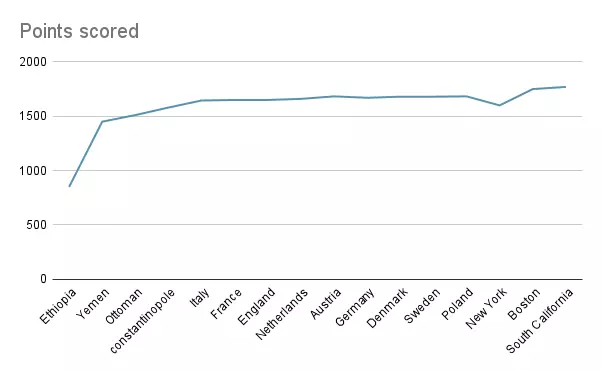
There are stories of the first brewed coffee to be ever produced in Yemen or Ethiopia. However, historians suggest and verify that the first ever coffee was brewed in Yemen, where the beans were imported from Ethiopia.
Even before that in the 15th century, the Arabs were said to take coffee to get energy. However, the exact time and location of the first-ever brewed coffee was never found.
The Birthplace of Brewed Coffee: A Tale of Two Lands

Where Did Coffee Originate?
Imagine a goat herder named Kaldi strolling through Ethiopia way back in the 800s. His goats, usually sleepy like the sun setting, munched on some weird red berries and suddenly went NUTS! They were bouncing and zooming, full of energy like bunnies on sugar. Curious, Kaldi took these strange beans to some monks who always wanted to stay awake for night prayers. They brewed a dark drink, took a sip, and BOOM! Their eyelids popped open and their brains woke up faster than a rooster at sunrise. This was coffee, baby!
Now, this story might sound like a fairy tale, but scientists found old coffee bean bits in Ethiopia from the same time, making it kinda possible. So, did goats really give us coffee? Maybe! We can be pretty sure it started in Ethiopia somewhere around then, thanks to Kaldi’s curious goats and those super-alert monks. Fun fact: Did you know there are two main types of coffee beans? One comes from a plant that needs shade, just like you at the beach.
Where was Coffee Invented? – Was it Yemen?

Across the Red Sea, in 15th-century Yemen, coffee wasn’t just a weird bean anymore. It was like a superpower for the mind! Sufi mystics, who were kind of like intellectuals and spiritual seekers, realized coffee helped them focus and stay up late thinking deep thoughts. So, they started growing coffee plants everywhere, turning them from wild jungle treasures into valuable crops. And guess what? They didn’t just keep it to themselves! They opened up coffee shops called “qahveh khaneh,” which were basically the coolest hangouts in town.
Coffee originated in Ethiopia, but it was invented in Yemen. Sounds confusing? Ethiopia was its birth place, but the Yemeni people gave it the full form of coffee as of today. People from all walks of life, from poets and philosophers to merchants and musicians, would gather in these coffee houses. They would chat, debate ideas, and share stories about themselves, and their works. It was like Facebook, Instagram, and a super chill study group all rolled into one! Thanks to Yemen’s coffee craze, this drink went from a personal pick-me-up to a glue that held communities together. Pretty cool, right?
From East to West: Coffee’s Global Voyage
Europe
Around the 16th century, coffee beans initially met with skepticism from religious authorities, began a captivating journey westwards. Turkish merchants introduced the beverage to Constantinople, where coffee houses became centers of social and political life. By the 17th century, coffee had conquered Europe, captivating the palates of Italians, French, and English. (Source: Smithsonian Magazine)
Mid-17th century: This is the most commonly cited timeframe, with specific dates varying depending on the region.
Italy: Around 1645, coffee houses began popping up in Venice, quickly becoming popular among artists and intellectuals.
France: Introduced in the late 1650s, coffee gained traction under King Louis XIV and became a fashionable beverage among French elites.
England: Coffee houses appeared in London around 1650, initially facing some resistance but eventually becoming integral to English social life.
America:
Across the Atlantic, coffee’s arrival in the 17th century coincided with the American Revolution. Boston Tea Party rebels swapped their cups of tea for the exciting brew, and coffee houses became places of revolutionary spirits. By the 19th century, coffee plantations flourished in the Southern United States, solidifying its position as a national favourite. (Source: National Geographic)
New York: Dutch colonists likely brought coffee in the late 1600s.
Boston: Coffee houses flourished in Boston during the 18th century, playing a pivotal role in the American Revolution.
South Carolina: Coffee plantations emerged in the Southern United States by the late 18th century, solidifying its position as a national favourite.
Beyond the Origins: A Global Celebration of Beans

Coffee is a big deal globally. It’s the second most traded thing in the world, right after oil. Brazil is the champion in making the most coffee, and Finland takes the lead in drinking the most per person. (Source: International Coffee Organization)
Whether you’re in the lively markets of Istanbul, the charming cafes in Paris, the lively street stalls in Vietnam, or the hip coffee shops in New York, coffee is like a common language. People all around the world connect through the rich smells and delicious flavors of coffee.
A Cup of Intrigue: Additional Facts to Savor
- The word “coffee” is believed to be derived from the Arabic word “qahwa,” likely originating in Yemen. (Source: National Geographic)
- Coffee was initially met with resistance due to its stimulating effects, even facing bans from religious authorities.
- Studies suggest moderate coffee consumption can offer health benefits like improved cognitive function and reduced risk of certain diseases. (Source: Mayo Clinic)
- Beyond brewing, coffee beans are used in cosmetics, baking, and even fuel production.
So, who were the first to brew coffee? While the answer may remain unknown in the history of time, one thing is certain: coffee’s captivating story continues to unfold, one sip at a time.
We raise our mugs to the mystery, the legends, and the countless individuals who have shaped this global phenomenon. We make every cup a tribute to the rich tapestry of coffee’s origins.
How, when and where did Coffee Originate?
850 CE
Whispers of Potential: The earliest written mention of coffee appears in Ethiopian medical texts from this period. These texts discuss the use of boiled coffee beans for treating headaches, stomachaches, and respiratory problems. (Source: “Medieval Ethiopia and the Christian Roots of Coffee” by Christopher A. Shack)
1450 CE
From Ritual to Routine: Sufi mystics in Yemen are documented using coffee for devotional purposes around this time. They valued its focus-enhancing properties, consuming it before prayers and other religious activities. This marks the adoption of coffee for spiritual practices, highlighting its potential for enhancing focus and clarity. (Source: “Coffee Across the World” by Mark Pendergrast)
1511 CE
From Acceptance to Apprehension: The Ottoman Empire, initially captivated by coffee’s popularity, banned its consumption in 1511. This ban was motivated by the concerts about it’s stimulating effects. The emperor thought it might be inciting a potential rebellion. However, this reveals the popularity of coffee and the social impact it already gained. (Source: “A History of Coffee” by James Hoffmann)
1580 CE
A Brewing Hub Emerges: Coffee houses, known as “qahveh khaneh,” began to flourish in Constantinople around 1580. These vibrant hubs served as centers for social gathering, intellectual discourse, and even political discussions. The rise of coffee houses showcases coffee’s evolution from a personal discovery to a cornerstone of culture and community. (Source: “Uncommon Grounds: The History of Coffee and How It Transformed Our World” by Mark Pendergrast)
1650 CE
Crossing the Continent: By the mid-17th century, coffee embarks on its journey westward, conquering the palates of Europeans. In Italy, coffee houses become popular meeting places for artists and intellectuals. France embraces coffee as a fashionable beverage, while England incorporates it into its daily routines. Europe’s fascination with coffee highlights its globalization and transformative impact on cultures worldwide. (Source: “Coffee: A Global History” by Jonathan Morris)

Figure: Timeline of the introduction of coffee around the world
Conclusion
Whether it’s Ethiopia, or Yemen coffee is undoubtedly one of the most popular drinks around the world. Its aroma and flavour not only awakes our body but also our mind. The aroma and flavour give a sweet awakening to our sleepy minds. If you want to know more about this magical drink do visit our page “coffee blog mart” to know everything about coffee.

I am Mojoon, a certified and award-winning barista by choice, with 7 years of experience in the field. I have served and trained coffee shop baristas worldwide. I worked at Krispy Kreme for an extended period, and now I aim to help regular people brew coffee like me. I pursue this job with my passion for writing and also provide one-on-one coaching for newly minted baristas.